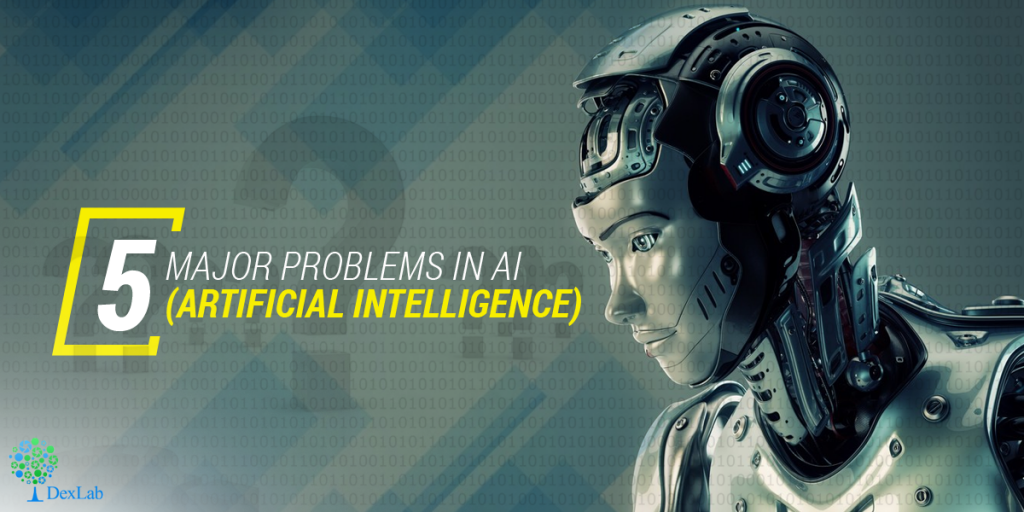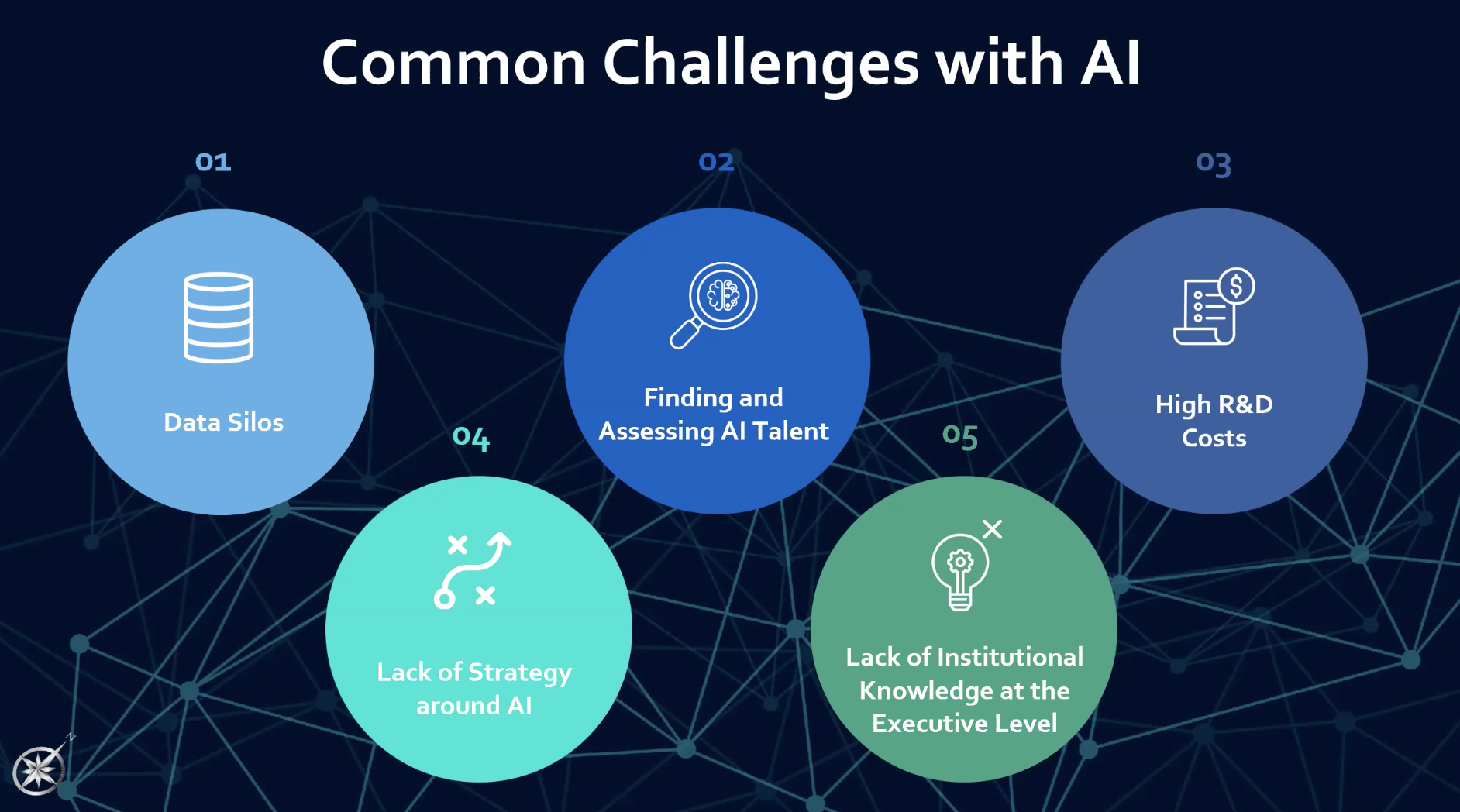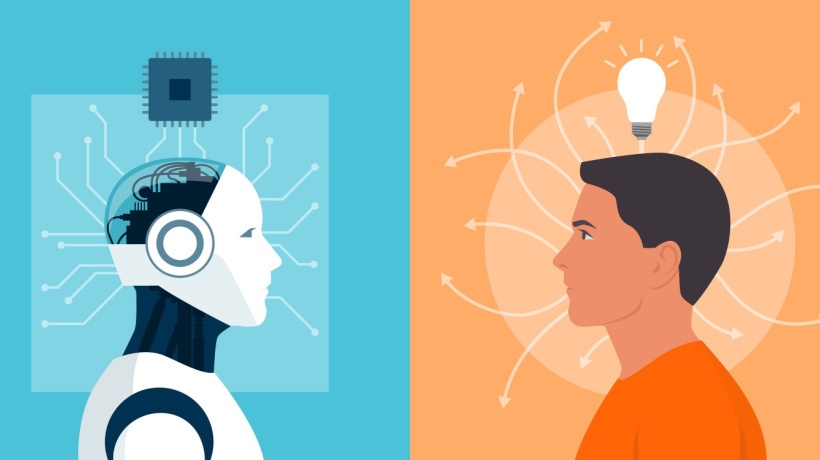Artificial intelligence (AI) is rapidly transforming various aspects of our lives, offering immense potential for progress. However, alongside its transformative capabilities, AI presents a myriad of challenges that require careful consideration. While AI holds the promise of solving complex problems and enhancing human capabilities, its potential to exacerbate existing societal issues and introduce new ethical dilemmas raises crucial questions about its responsible development and deployment.
This article explores some of the most pressing challenges facing AI, examining the ethical concerns, potential job displacement, lack of explainability, data bias, security and privacy vulnerabilities, and the need for effective regulation and governance. By understanding these challenges, we can work towards harnessing the power of AI while mitigating its potential risks.
Ethical Concerns
The rapid advancement of AI raises significant ethical concerns, particularly regarding its potential to exacerbate existing societal biases and inequalities. While AI promises to revolutionize various sectors, its development and deployment must be guided by ethical principles to ensure fairness, transparency, and accountability.
Potential for Bias Amplification
AI systems are trained on massive datasets, which often reflect existing societal biases. This can lead to biased outcomes, perpetuating and even amplifying existing inequalities. For example, facial recognition systems have been shown to be less accurate for people of color, potentially leading to discriminatory outcomes in law enforcement and other areas.
- A study by the National Institute of Standards and Technology (NIST) found that facial recognition algorithms were significantly less accurate for Black and Asian individuals compared to white individuals.
- Similarly, AI-powered hiring tools have been criticized for discriminating against certain demographic groups, such as women and minorities.
Ethical Dilemmas in AI Applications
The development and deployment of AI technologies raise a multitude of ethical dilemmas, particularly in sensitive areas such as autonomous weapons systems and facial recognition.
- Autonomous weapons systems, also known as killer robots, raise concerns about the potential for unintended consequences and the lack of human control over life-or-death decisions.
- Facial recognition technology raises concerns about privacy violations and the potential for misuse by governments and corporations.
Responsibility of AI Developers and Users
To mitigate these risks, AI developers and users must prioritize ethical considerations throughout the AI lifecycle, from data collection and model development to deployment and monitoring.
- AI developers should ensure that their algorithms are fair, transparent, and accountable. This includes addressing potential biases in training data and developing mechanisms for auditing and explaining AI decisions.
- Users of AI systems should be aware of the potential for bias and ethical implications and use these technologies responsibly.
Job Displacement

The potential for AI to displace human workers is a significant concern. As AI systems become increasingly sophisticated, they can automate tasks previously performed by humans, leading to job losses in various sectors. This raises questions about the future of work and the need for strategies to mitigate the impact of AI-driven automation.
Impact on Job Sectors
The impact of AI on job sectors varies significantly depending on the nature of the work involved. Some sectors are more susceptible to automation than others. For example, jobs that involve repetitive tasks, data analysis, and customer service are particularly vulnerable to AI-driven automation.
- Manufacturing:Robots and automated systems are already widely used in manufacturing, and AI is further automating tasks such as quality control and production planning. This can lead to job losses for factory workers, but it can also increase efficiency and productivity.
- Transportation:Self-driving vehicles are expected to disrupt the transportation industry, potentially displacing truck drivers, taxi drivers, and bus drivers. However, new job opportunities may emerge in areas such as vehicle maintenance and data analysis.
- Finance:AI is being used in finance to automate tasks such as fraud detection, risk assessment, and customer service. This can lead to job losses for financial analysts and other professionals, but it can also improve efficiency and reduce costs.
- Healthcare:AI is being used in healthcare to diagnose diseases, develop personalized treatment plans, and assist with surgery. While this can improve patient outcomes, it may also lead to job losses for medical professionals.
Benefits and Drawbacks of AI-Driven Automation
AI-driven automation offers both benefits and drawbacks for the workforce.
Benefits
- Increased efficiency and productivity:AI can automate tasks more efficiently and accurately than humans, leading to increased productivity and reduced costs.
- Improved safety:AI can be used to automate dangerous or repetitive tasks, improving workplace safety.
- New job opportunities:While AI may displace some jobs, it can also create new job opportunities in areas such as AI development, data science, and AI maintenance.
Drawbacks
- Job displacement:The most significant drawback of AI-driven automation is the potential for job displacement. As AI systems become more sophisticated, they can perform tasks previously performed by humans, leading to job losses.
- Skill gap:The rapid adoption of AI can create a skill gap, as workers may not have the necessary skills to adapt to the changing job market.
- Ethical concerns:There are ethical concerns surrounding the use of AI, such as bias in algorithms and the potential for AI to be used for malicious purposes.
Hypothetical Scenario
Imagine a hypothetical scenario in the retail industry. A large retail chain decides to implement AI-powered chatbots to handle customer inquiries. These chatbots are trained on a massive dataset of customer interactions and can answer common questions, provide product recommendations, and even process orders.
While this technology can improve customer service efficiency and reduce costs, it can also lead to job losses for customer service representatives. As the chatbots become more sophisticated, they may be able to handle increasingly complex inquiries, further reducing the need for human customer service agents.
This scenario highlights the potential for AI to displace workers in industries that rely on human interaction.
Lack of Explainability

One of the most significant challenges in AI is the lack of explainability, also known as the “black box” problem. This refers to the difficulty in understanding how complex AI models, particularly deep learning models, arrive at their decisions. While these models can achieve impressive performance in various tasks, their internal workings often remain opaque, making it challenging to interpret their reasoning and justify their outputs.
The Implications of Black Box AI
The lack of explainability in AI models has profound implications for transparency, accountability, and trust. * Transparency:Understanding how AI models make decisions is crucial for ensuring transparency and fairness. Without explainability, it becomes difficult to identify and address potential biases or errors in the model’s outputs.
Accountability
When AI systems are used in critical domains such as healthcare, finance, or criminal justice, it is essential to be able to hold them accountable for their decisions. Explainability allows us to trace the decision-making process back to the underlying data and algorithms, enabling us to identify and address any potential issues.
Trust
Trust is essential for the widespread adoption of AI technologies. Users are more likely to trust AI systems when they understand how they work and can verify the reasoning behind their decisions. The lack of explainability can erode trust, leading to reluctance to rely on AI systems in critical applications.
Levels of Explainability in AI Systems
Different AI systems offer varying levels of explainability, with a trade-off between performance and interpretability. Here’s a table illustrating this:| Level of Explainability | Description | Trade-off | Example ||—|—|—|—|| Opaque| The model’s decision-making process is entirely hidden, making it impossible to understand how the model arrives at its outputs.
| High performance, low interpretability | Deep neural networks || Partially Explainable| The model provides some insights into its decision-making process, but these insights may be incomplete or difficult to interpret. | Moderate performance, moderate interpretability | Decision trees || Transparent| The model’s decision-making process is fully transparent, allowing users to understand how the model arrives at its outputs.
| Low performance, high interpretability | Rule-based systems |
Data Bias and Reliability
AI systems are trained on massive datasets, and the quality and diversity of this data significantly influence the outcomes. However, training data often reflects existing societal biases, leading to biased AI systems that perpetuate or even amplify these biases.
The Influence of Biased Data
Data bias occurs when the training data used to train an AI system does not accurately represent the real world. This can lead to AI systems that make unfair or discriminatory decisions.
- Facial Recognition:Facial recognition systems trained on datasets primarily composed of light-skinned individuals often perform poorly on individuals with darker skin tones. This bias can lead to inaccurate identification and potentially discriminatory outcomes in law enforcement and security applications.
- Hiring and Loan Applications:AI systems used in hiring and loan applications can perpetuate existing biases based on factors like race, gender, or socioeconomic status. For example, an AI system trained on historical data might learn to associate certain demographics with lower creditworthiness, leading to unfair loan denials.
Importance of Data Quality and Diversity
To mitigate the risks of biased AI, it is crucial to prioritize data quality and diversity in AI development.
- Data Quality:Ensuring data accuracy, completeness, and consistency is essential. Errors or inconsistencies in training data can lead to inaccurate predictions and biased outcomes.
- Data Diversity:Training data should be representative of the diverse populations and contexts in which the AI system will be deployed. This includes considering factors like race, gender, socioeconomic status, and geographic location.
Security and Privacy
The rise of AI systems brings with it a range of security and privacy concerns. These systems are often built on massive datasets, making them vulnerable to attacks and breaches. Additionally, the use of AI in various applications raises questions about the potential for misuse of personal information.
Vulnerabilities of AI Systems to Security Threats
AI systems are susceptible to various security threats, including data poisoning, model theft, and adversarial attacks.
- Data Poisoning:Malicious actors can intentionally introduce corrupted or biased data into training datasets, leading to inaccurate and compromised AI models. For instance, a spam filter trained on a dataset containing malicious emails might be tricked into allowing spam to pass through.
- Model Theft:AI models can be stolen or copied, enabling attackers to replicate the functionality of the original system. This can be achieved through techniques like model extraction, where an attacker can infer the structure and parameters of a model by observing its outputs.
- Adversarial Attacks:Attackers can manipulate input data to trick AI systems into making incorrect predictions. This can be achieved by adding subtle, imperceptible changes to images or text, leading to misclassification or erroneous outputs. For example, an image classifier trained to identify dogs might be tricked into misclassifying a dog as a cat by adding a small, barely noticeable pattern to the image.
Implications of AI for Data Privacy
AI systems often rely on large datasets that may contain sensitive personal information. This raises concerns about data privacy and the potential for misuse of this information.
- Data Collection and Use:AI systems often collect vast amounts of data about individuals, including their location, browsing history, and online interactions. This data can be used to create detailed profiles of individuals, which can be used for targeted advertising, profiling, and other purposes.
- Data Security and Breaches:AI systems are often complex and interconnected, making them susceptible to data breaches. If a breach occurs, sensitive personal information could be compromised, leading to identity theft, financial fraud, and other harms.
- Transparency and Explainability:The complex nature of AI algorithms can make it difficult to understand how they process data and make decisions. This lack of transparency can make it challenging to identify and mitigate privacy risks.
Best Practices for Securing AI Systems and Protecting User Privacy
- Data Minimization:Only collect the data that is absolutely necessary for the intended purpose. Avoid collecting unnecessary or sensitive information.
- Data Encryption:Encrypt data both at rest and in transit to protect it from unauthorized access.
- Access Control:Implement robust access controls to restrict access to sensitive data to authorized personnel.
- Regular Security Audits:Conduct regular security audits to identify and address vulnerabilities.
- Privacy by Design:Incorporate privacy considerations into the design and development of AI systems from the outset.
- Transparency and Explainability:Develop AI systems that are transparent and explainable, so users can understand how their data is being used and how decisions are being made.
Regulation and Governance

Regulating artificial intelligence (AI) presents unique challenges due to the technology’s rapid evolution and inherent complexity. Balancing innovation with ethical considerations and mitigating potential risks requires careful consideration of the role of governments, international organizations, and the private sector.
Challenges of Regulating AI
Regulating AI effectively is a complex endeavor due to several factors:
- The rapid pace of AI development makes it challenging to create regulations that remain relevant over time. New AI applications emerge constantly, often outpacing regulatory frameworks.
- The complexity of AI algorithms and their decision-making processes makes it difficult to understand and assess their potential risks and impacts. This opacity can hinder the development of effective regulatory measures.
- The global nature of AI development and deployment requires international cooperation to establish consistent and effective regulations. This presents challenges in coordinating different national approaches and ensuring global consistency.
The Role of Governments and International Organizations
Governments and international organizations play a crucial role in establishing ethical guidelines and regulations for AI:
- Developing ethical frameworks: Governments and organizations can promote ethical AI development by establishing guidelines and principles for responsible AI use, addressing issues like fairness, transparency, accountability, and privacy.
- Enacting legislation: Regulations can be implemented to address specific AI-related risks, such as data privacy, algorithmic bias, and the use of AI in critical applications like healthcare and autonomous vehicles.
- Promoting research and development: Funding research into AI safety, explainability, and ethical implications can contribute to developing robust and responsible AI systems.
- Facilitating international collaboration: Establishing international partnerships and forums can foster cooperation in developing and implementing global AI regulations.
AI for Malicious Purposes
The potential for AI to be used for malicious purposes is a growing concern:
- Deepfakes: AI can create highly realistic synthetic media, such as videos and audio recordings, that can be used to spread misinformation or damage reputations. Deepfakes have the potential to manipulate public opinion and undermine trust in information sources.
- Manipulating public opinion: AI algorithms can be used to target individuals with personalized messages designed to influence their beliefs and behaviors. This can be exploited for political campaigns, social engineering, and propaganda purposes.
- Cybersecurity threats: AI can be used to develop sophisticated malware, phishing attacks, and other cyber threats. AI-powered attacks can be more difficult to detect and defend against, posing significant risks to individuals and organizations.
Last Word

The development and deployment of AI present both opportunities and challenges. As AI continues to evolve, it is essential to address these challenges proactively and collaboratively. By prioritizing ethical considerations, fostering transparency and explainability, mitigating bias, and establishing robust regulatory frameworks, we can ensure that AI is developed and used responsibly, contributing to a more equitable and prosperous future for all.
FAQ Explained
What are some examples of AI-driven automation in different industries?
AI-driven automation is being implemented across various industries, including manufacturing, healthcare, finance, and transportation. Examples include robotic process automation (RPA) for automating repetitive tasks in finance, AI-powered diagnostic tools in healthcare, and self-driving vehicles in transportation.
How can data bias be mitigated in AI systems?
Mitigating data bias in AI systems requires a multi-pronged approach, including using diverse and representative datasets, implementing bias detection and mitigation techniques during training, and fostering transparency and accountability in AI development.
What are some best practices for securing AI systems?
Best practices for securing AI systems include implementing robust security measures, such as encryption, access control, and threat detection, as well as ensuring the security of the underlying infrastructure and data pipelines.
What are the key elements of effective AI regulation?
Effective AI regulation should address ethical considerations, transparency and accountability, data privacy, security, and potential misuse of AI technologies. It should also be adaptable and responsive to the rapidly evolving nature of AI.